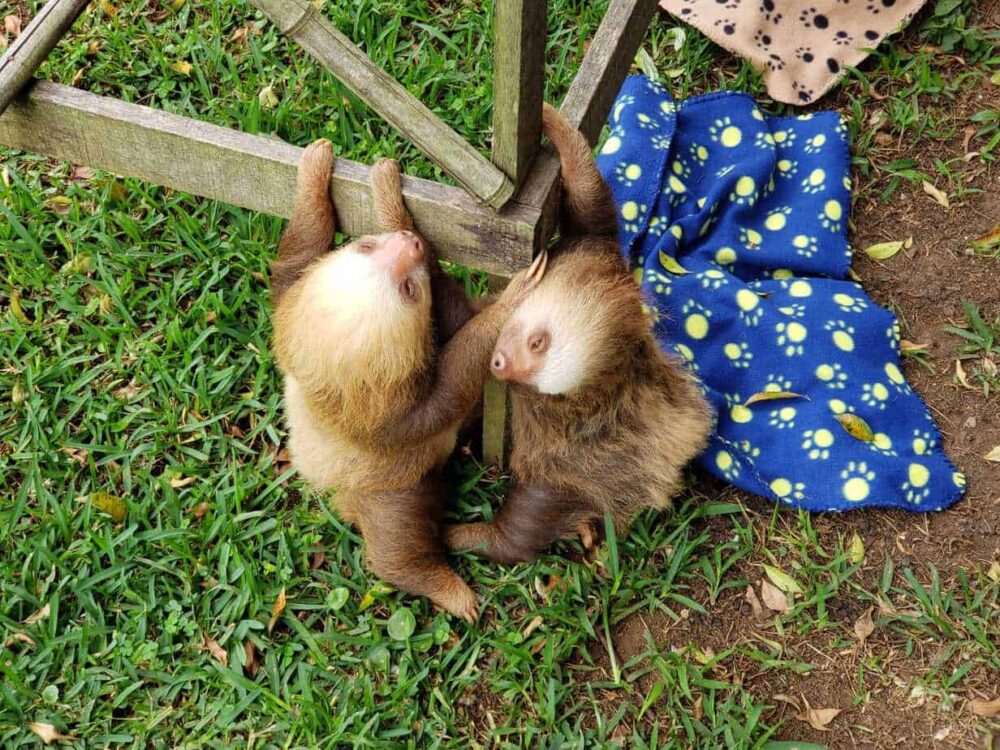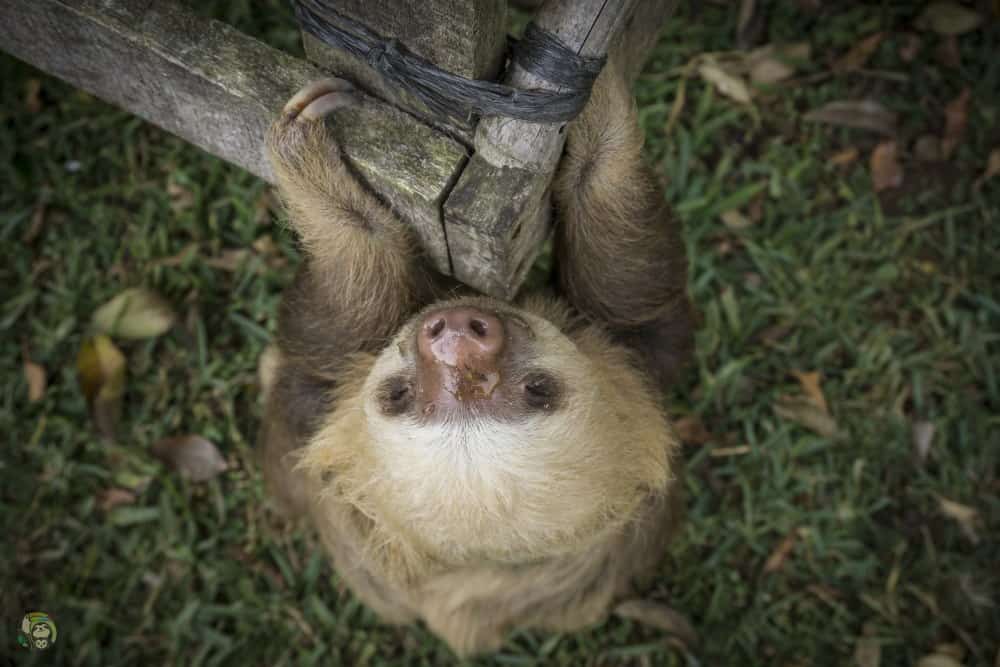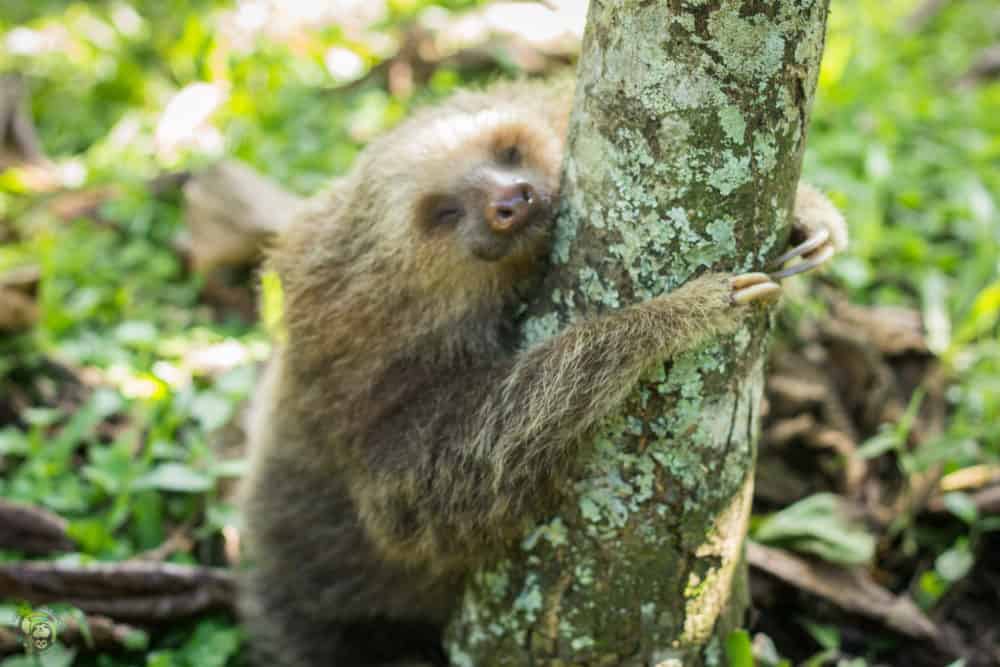We all know that wonderful feeling when we arrive at our destination and find the nearest bathroom. Many times, we throw our heads back and give a sigh of relief. Imagine, then, only being able to go to the bathroom once a week, or even less frequently. This is the life of a sloth.
As many of you know, sloths are solitary creatures and prefer to stay high in the forest canopy, undetected. They accomplish this by having amazing ways to camouflage themselves and with certain adaptations that help them take this inconspicuous lifestyle to the extreme.
One major adaptation is having a large multi-chambered stomach. This makes up a large portion of their body, and when full, can account for up to two-thirds of a sloth’s weight. The stomach is full of many types of bacteria which break down the leaves and other foods eaten by the sloth. Digestion of the fibrous food sloths consume is very slow, allowing these animals to remain high in the trees for long periods of time, without expending a lot of energy.
When their stomach is full, sloths slowly descend down the trees by hugging the trunk, performing a sort of bouncy dance that I can only describe as twerking or belly dancing.
After this, they look skyward and slowly close their eyes, which indicates that they have started urinating. This can last several minutes and produces up to two liters of urine. This is why sloths don’t drink water, but derive the liquid in their diet from the food they eat.

Once they are finished urinating, they open their eyes and start the process of defecating. They defecate pellets that look somewhat like coffee beans in a clump. This stage of their elimination is critical to the life cycle of the many insects which live in the algae-rich sloth fur. As the sloth leaves fecal matter at the base of the tree, the bugs living in its fur lay their eggs in the pile of fresh dung, leaving their larvae to develop in the nutrient-rich environment. The adult insects that emerge crawl or fly back up to the sloth to live and mate, completing their life cycle.
There are many schools of thought as to whether this relationship between sloth, bugs and algae benefits the sloth, but it definitely benefits many types of other organisms. Once the sloths finish eliminating, they climb back up into the tree canopy to remain there another week or two, eating and sleeping, until they repeat the process.

While adult sloths only go to the bathroom once every week or two, the orphaned baby sloths in our care must be taken out on a daily basis to try to get them to eliminate. We first take them outside to the grass and either place them with a stuffed animal, with another sloth buddy, or stand them up, mimicking a tree trunk.
One usually successful way to convince them to potty is to have a paper towel soaked with sloth pee that we place in front of their nose. They have a very fine sense of smell and usually respond to the odor, by active sniffing. We hold our breath, hoping this will stimulate their little bodies to follow suit.
We watch for the little nose twitch, and if they start bouncing or wiggling their bottoms, we can figure that our efforts will be met with some success. Once their eyes shut tightly, we know we’re home free!
At this point, we hope we’re in a comfortable position, as they can take several minutes to relieve themselves! The baby will eventually open its eyes once it starts defecating and will, many times, start crawling away, leaving a trail of poo pellets in its wake. Once a baby has defecated, we always weigh them to keep accurate records.
Fortunately, once the babies are a bit older, we can place them on a wooden climbing structure, where they will complete the tasks on their own. As they grow older, their instincts kick in, and our assistance is unnecessary — which is living proof that we have done our job!
It’s amazing how many strategies the various Sloth Team members come up with to get our little challenging babies to potty, inspiring awe and determination amongst the rest of us. “Potty” cool … don’t you think?
— Denise Gillen is a Sloth Nanny at Toucan Rescue Ranch.

This article was produced by The Toucan Rescue Ranch. The Toucan Rescue Ranch specializes in helping wild animals recover so that they can be reintroduced into the wild.

